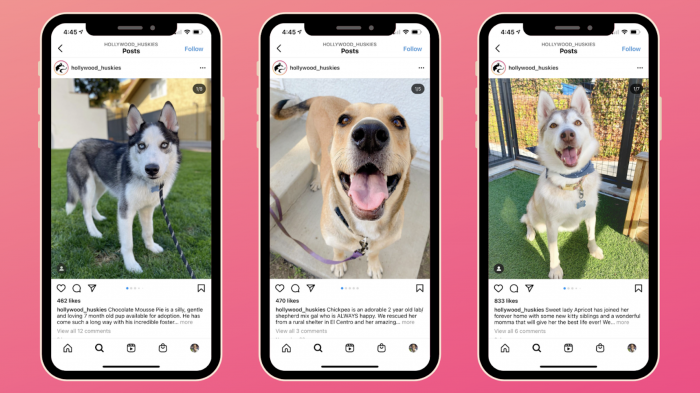
Charmin Ultra Plus, Quilted Northern and generic two-ply toilet paper have not been the only things in high demand since the beginning of the novel coronavirus pandemic.
Apparently quarantines go easier with pets.
Animal adoptions have been skyrocketing in the United States since stay-at-home orders were put in place across the nation.
Americans have been stuck at home with nothing to do. Children home from school and families searching for entertainment has resulted in a need of lasting companionship from dogs and cats.
And that even includes Chapman students. Staying at home in the Zoom era has them looking for something new in their lives. A sense of normalcy?
“Everybody’s looking for joy and for some sense of hope and normalcy … animals certainly do that for us,” said Ann Dunn, the director of Oakland (California) Animal Services in a Cnet article. “I call it the silver-lining for COVID-19.”
What started in March as a surge in demand had, as of October, become an adoption frenzy. According to the Washington Post, “Shelters, nonprofit rescues, private breeders, pet stores — all reported more consumer demand than there were dogs and puppies to fill it.”
“We have a waitlist of people that are approved to adopt because right now we don’t have enough dogs for the demand,” said Sydney Nassiri from Hollywood Huskies.
Since stepping on campus for the first time of his Chapman career, business major and senior, Brandon Pike has spent the most time at home during this pandemic. For his family, it was important that they added a furry friend to their household but before March it never seemed possible with everyone working or out of the house.

“We always wanted a dog,” said Pike. “But no one was ever home I was obviously in school, my sister was working and out of state, my parents were busy, but for the first time in a long time we all were [in] Colorado and all under the same roof so it kind of just made sense to get a new puppy.”
Vacations have been taken off the table, flights have been cancelled, and almost everyone’s days have been spent at home creating a need for a few new furry friends and that time to plan out how to raise a new family member.

Senior journalism major Breeana Greenberg takes a few overseas trips a year with her family, but traveling while having cats has always been a burden.
“That was a huge reason my mom did not want to adopt new cats, because it is such a pain to find someone to cat-sit,” said Greenberg “It was preventing us from traveling but now that we don’t foresee traveling, at all, we adopted two cats.”
As of October, Orange County Animal Services saw an increase of an 82% adoption rate from 2019 with over six thousand cats and dogs finding loving homes.
“I think [the pandemic] increased the desire for people to seek out a companion during these isolating times,” said Diane Summers, manager of Orange County Animal Services in an Orange County Animal Services press release. “Also, I think now more than ever people are viewing pets as an extension of their family and making efforts to keep them.”
Similarly, The ASPCA saw a nearly 70% increase in animals going into foster homes through its programs in New York and Los Angeles, compared with the same period in 2019.

The increased time spent on social media during quarantine has helped promote adoptions. With over 3,500 shelters in the US, many have jumped to Facebook, Instagram and Twitter to showcase the new additions to the shelters.
“Social media is a key role in gaining interest from people for dogs up for adoption,” said Nassiri. “There is no way we would have been able to get as many dogs out of the shelter without the help from Facebook and Instagram. The pictures we posted got people interested and they even had the opportunity to Zoom with their pet before coming into the shelter.”

Most shelters are currently closed due to stay-at-home orders and rescues have paused in-person adoption events, however many are hosting virtual meet-and-greets through Zoom.
“Before the pandemic, I would have never thought of zooming a dog,” said Pike. “But when we met our pup Walter online we fell in love with him immediately.”
Adopting a dog or cat has become almost too easy during the quarantine and it raises the question whether families will be able to continue showing the love to their pets post-pandemic or if many are going to end up back in the shelters. Being home from work and school have been two of the main reasons students and families have decided to move to adopting a new family member. However, pets adopted over quarantine may get too used to the constant companionship of their owners.
“Down the line, when you do restart work, that might be a really big shift for your dog,” said Kayla Fratt, a certified dog behavior consultant and owner of Journey Dog Training in an NPR aritcle.
Greenberg and her family adopted Olive and Zoe, their two cats, after her previous cat had passed away. Despite taking on two other animals into their home, they made their decision solely based on emotion. However, they are not concerned about how life will change post-pandemic.
“A lot of the decision was emotion based. Even though my old cat was sick for a long time, we were both torn up about losing him and adopting the kittens really helped us feel that loss a little less,” said Greenberg. “We’re both home a lot more and I’m looking for remote work so hopefully we’ll be home to enjoy the kittens for a long time.”
Animal adoptions have been the silver-lining during the on-going COVID-19 pandemic but it is important to take into consideration how your life will look post-pandemic before bringing in a new furry family member into your house-hold.
Check your local shelters for adoption updates or out-reach programs they are putting together to see how you can get involved during the pandemic.
